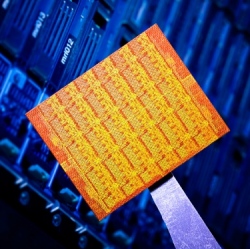
As supercomputing makes its way through the petascale era, the future of the technology has never seemed so uncertain. HPC veteran Thomas Sterling, Professor of Informatics & Computing at Indiana University, takes us through some of the most critical developments in high performance computing, explaining why the transition to exascale is going to be very different than the ones in the past and how the United States is losing its leadership in HPC innovation.
HPCwire: Do you have a sense that other regions, China and Europe in particular, are closing the HPC leadership gap that the US has enjoyed for so long? If so, do you think this is more the result of technology democratization rather than government policy choices?
Thomas Sterling: It is clear that other regions are not closing the HPC leadership gap; they are widening it. Through a series of actions in both the EU and Asia the momentum is shifting overseas where once it was entrenched within the US. The Europeans through their EESI and forthcoming EESI2 efforts are making dramatic strides in planning towards a EU-dominant exascale trajectory. The Russians as well are putting in to place a tightly coordinated exascale program combining Moscow State University, T-Platforms, and government, not simply to duplicate prior US methods but to innovate beyond them.
Asia today represents the biggest surge in top performing machines with the 10 petaflops Kei machine in Kobe Japan and the 2.6 petaflops Tianhe-1A system in Tianjin. Perhaps more defining, if somewhat less powerful, is the Sunway BlueLight, a petaflops-class machine built entirely of Chinese microprocessors. Less clear is the degree to which all of these machines are being applied effectively to end-purpose applications, but it is only a matter of time until these strengths push other science and industry objectives beyond the US sphere of influence.
The reason is a mix of both technology democratization and government policy. Neither is working in favor of the US. While the US will be deploying 10 and 20 petaflops machines over the next couple of years, it is clear that the momentum in innovation is off-shore. What may reverse this distressing trend is the new — no pun intended — energy at DOE in driving towards exascale through innovative advancements in software, programming methods, application parallel algorithms, and eventually at least to some degree in hardware.
HPCwire: How is the transition to exascale different from the other HPC milestone transitions — terascale and petascale — that we’ve passed through?
Sterling: The transition to exascale is different from the two previous tri-decade transitions through which we have passed, and in two fundamental ways: one related to the past, and the other the future. By the early 1990’s, the “killer micro,” cheap DRAM, and the emergence of system area networks manifest as MPPs (for example, Intel Touchstone Delta) and commodity clusters (for example, my own Beowulf project). These combined with the foundational Communicating Sequential Processes execution model reflected by the message-passing programming model established a formula to match weak-scaling workloads to VLSI component technologies.
At about 11 year intervals this delivered teraflops-scale computing, ASCI Red in 1999, and petaflops-scale, Roadrunner in 2008. However, this highly successful strategy is unlikely to facilitate the realization of exascale computing, except perhaps for some specialized and carefully crafted workloads. This is because the means adopted by this approach to address key factors of performance degradation will no longer prove adequate.
For example, the fine-grained instruction level parallelism and coarse-grained concurrent processes will not provide sufficient efficient parallelism to meet the billion-plus-way parallelism requirement of exascale. Static resource allocation and task scheduling is insufficient to provide the necessary efficiency or scalability as well as the introspective techniques required for reliability and power management. I expect the need for new programming models, which may include but not be limited to variations of previous techniques, will be essential for communicating between user applications and underlying execution systems.
As I have asserted in the past, a new execution model as an embodiment of a paradigm shift will drive this transition from old systems to new. We have done this before in the case of scalar to vector and SIMD, and again from these to message passing, MPPs, and clusters. We are now simply — or not so simply — facing another phase shift in HPC system programming, structure, and operation.
Exascale is also different because unlike previous milestones, it is unlikely that we will face yet another one in the future. These words may be thrown back in my face, but I think we will never reach zettaflops, at least not by doing discrete floating point operations. We are reaching the anvil of the technology S-curve and will be approaching an asymptote of single program performance due to a combination of factors including atomic granularity at nanoscale.
Of course I anticipate something else will be devised that is beyond my imagination, perhaps something akin to quantum computing, metaphoric computing, or biological computing. But whatever it is, it won’t be what we’ve been doing for the last seven decades. That is another unique aspect of the exascale milestone and activity. For a number, I’m guessing about 64 exaflops to be the limit, depending on the amount of pain we are prepared to tolerate.
